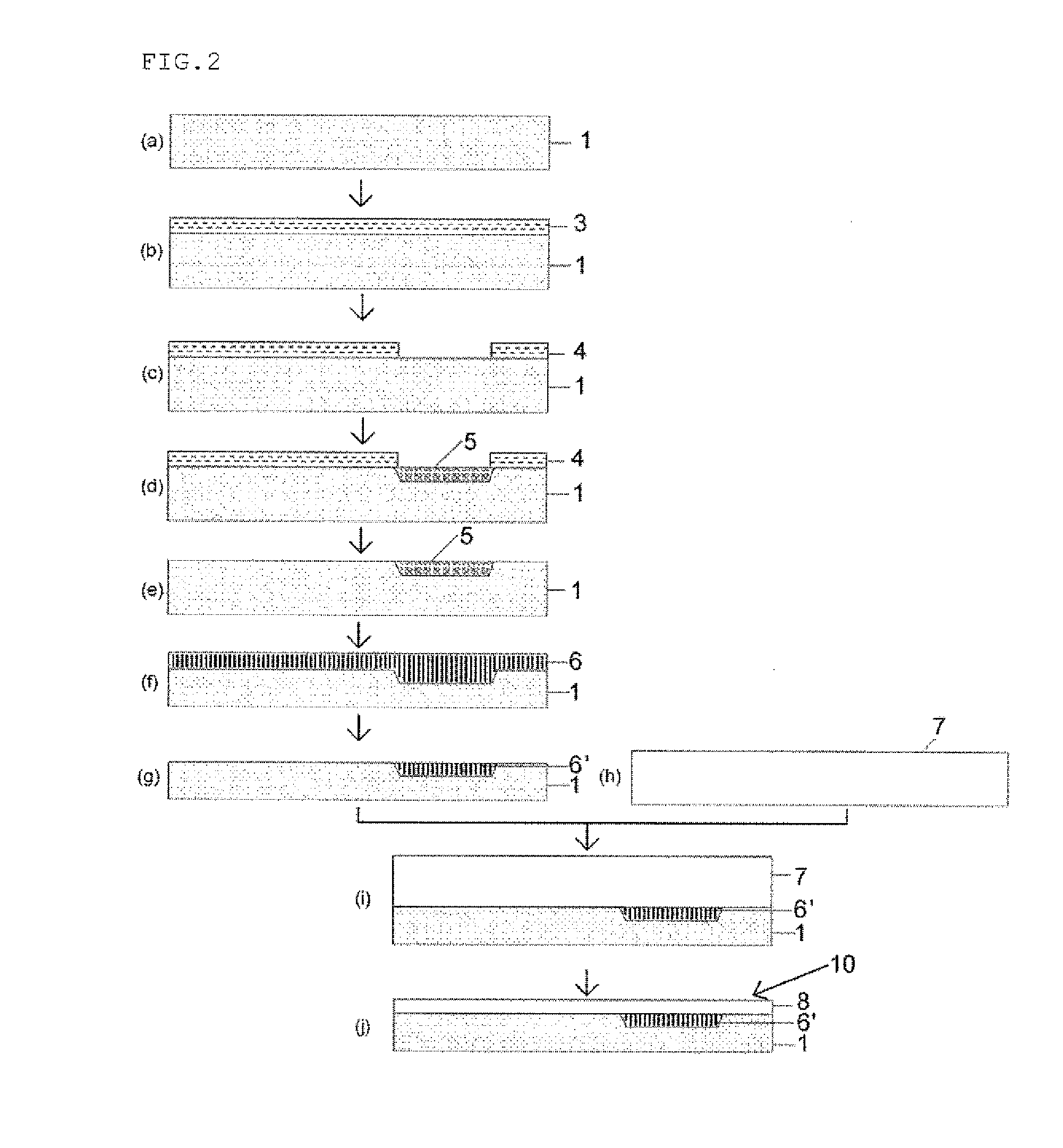Method for manufacturing bonded substrate having an insulator layer in part of bonded substrate
a technology of bonded substrate and insulator layer, which is applied in the direction of basic electric elements, electrical apparatus, and semiconductor devices, can solve the problems of deterioration of dram, unsuitable for circuit application of mixed mounting, and high integration, which is the greatest characteristic of dram, so as to reduce the number of fabrication steps and reduce the cost
- Summary
- Abstract
- Description
- Claims
- Application Information
AI Technical Summary
Benefits of technology
Problems solved by technology
Method used
Image
Examples
example 1
[0075]A boron-doped silicon single crystal substrate having resistivity of 0.05Ω·cm and a diameter of 150 mm was used as a base substrate, a heat treatment was first performed with respect to this substrate at a temperature of 1000° C. in a Pyro atmosphere for 90 minutes, and an oxide film of 200 nm was formed as a protective coat. Then, a resist film was applied to the upper side of the substrate, and a resist mask was formed by photolithography. At this time, as the resist film, a negative resist was selected. An opening portion of a 1 mm square was formed at point where an insulator layer is provided when a bonded substrate is manufactured. In this substrate having the resist mask, the protective coat was etched with a buffered HF solution, the resist mask was removed with use of a mixed liquid of a sulfuric acid and hydrogen peroxide, then RCA cleaning was carried out, and thereby the protective coat was patterned into a shape of the resist mask. This base substrate was subjecte...
example 2
[0077]A boron-doped silicon single crystal substrate having resistivity of 0.05Ω·cm and a diameter of 150 mm was used as a base substrate, a resist film was first applied to the upper side of the substrate, and a resist mask was formed by the photolithography. At this time, as the resist film, a negative resist was selected. An opening portion of a 1 mm square was formed at point where an insulator layer is provided when a bonded substrate is manufactured. This base substrate was subjected to anodic oxidation with HF concentration of 25% and a current application time of 50 seconds, and a porous layer having a thickness of approximately 100 nm and porosity of approximately 40% was formed. A point that was anodically oxidized and a point that was not anodically oxidized were formed on the base substrate since a point where the resist mask is provided is not subjected to the anodic oxidation, and the porous layer was thereby partially formed on a bonding surface of the base substrate....
PUM
| Property | Measurement | Unit |
|---|---|---|
| porosity | aaaaa | aaaaa |
| thickness | aaaaa | aaaaa |
| porosity | aaaaa | aaaaa |
Abstract
Description
Claims
Application Information
 Login to View More
Login to View More - R&D
- Intellectual Property
- Life Sciences
- Materials
- Tech Scout
- Unparalleled Data Quality
- Higher Quality Content
- 60% Fewer Hallucinations
Browse by: Latest US Patents, China's latest patents, Technical Efficacy Thesaurus, Application Domain, Technology Topic, Popular Technical Reports.
© 2025 PatSnap. All rights reserved.Legal|Privacy policy|Modern Slavery Act Transparency Statement|Sitemap|About US| Contact US: help@patsnap.com



